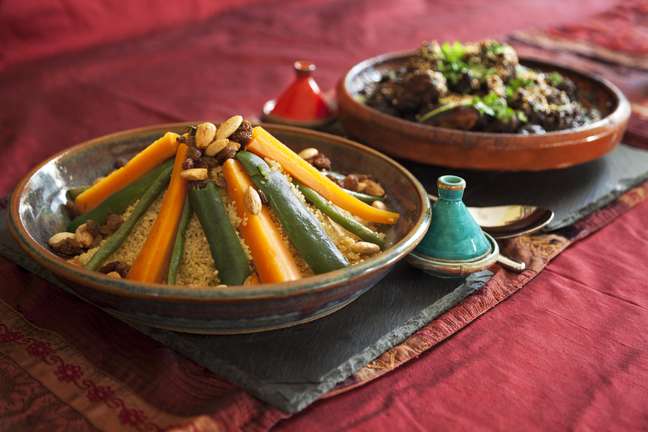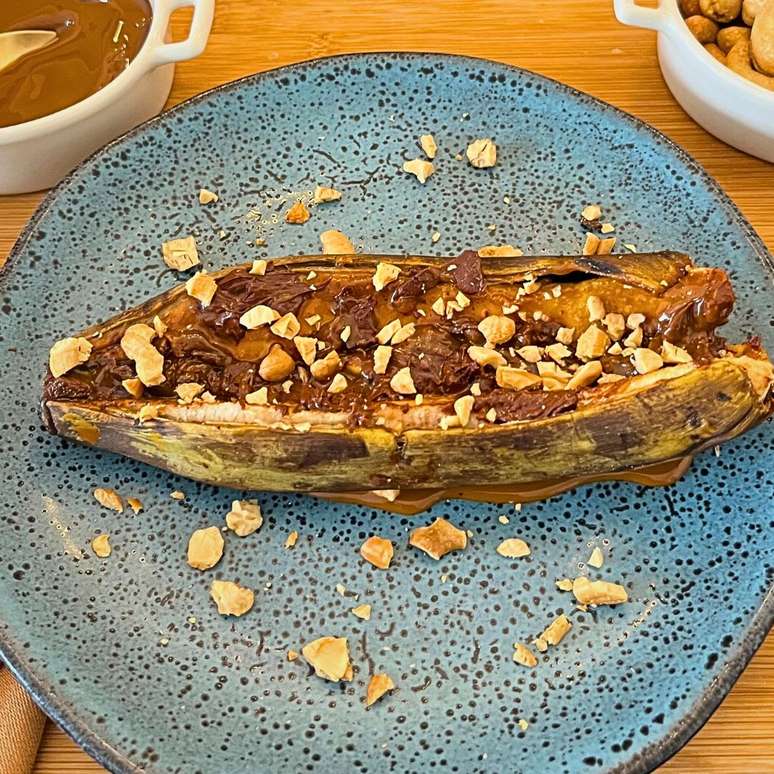Other chefs born in the countries of the continent are on the list of The Best Chef Awards, with the 100 best in the world
It is the beginning of a new chapter for African cuisine, that’s right, in the plural. Until a little over a year ago, no black person was in the top 1 list.00 best chefs in the world from The Best Chef Awards was released in 2017.
Selassie Atadika, who runs the Midunu nomad restaurant in Accra, Ghana, was the first and only African to appear on the ranking in 2020. Her promotion work New African cuisinewhich features native plants and ancestral cereals refined cuisineit has attracted the attention of all eyes previously turned to any continent other than Africa.

“It’s been too long to point out the amazing African chefs and kitchens,” Atadika said in an interview with taste. “Global cuisine must go further when it comes to diversity, inclusion and visibility.”
This year the scenario already looks different. Alongside Atadika, which continued in the rankings in 2021, 29-year-old Congolese Dieuveil Malonga joined the list in 94th place with his Meza Malonga and Afro Fusion, in Kigali, Rwanda.
Even the Malian Mory Sacko, of the young and already protagonist Mosuke in Paris, appeared for the first time in the top 100, in 84th place. And to take the title of ‘rising star’ was Fatmata Binta, from Sierra Leone. The chef is the creator of the Fulani Kitchen project, which aims to enhance the traditional recipes of the largest nomadic tribe in West Africa.
A significant change seems to be taking shape with all of these results. “We will discover the effects of slavery, colonialism, economic exclusion and much more,” Atadika stresses. Before dedicating herself to cooking as a profession and establishing herself as one of the faces that have elevated African culinary traditions, the Ghanaian worked for a decade at the UN on humanitarian missions. She has traveled to more than 40 countries of the 54 that make up her continent and has realized that it is possible to change the way people see a people and a history of centuries of pain by reintroducing traditional dishes into the mold of haute cuisine. .
If you ever have the opportunity to wake up in any city in Ghana, you will find that the most classic breakfast there is is waakye (read “waachai”). The base is usually made up of basmati rice, green beans and red sorghum leaves, all cooked together, which gives the dish a reddish tinge.
At street markets it is served by spoonfuls on a banana leaf with hard-boiled egg, pasta and shito, the spicy sauce typical of the country. At her restaurant, Selassie Atadika presents diced waakye lightly sprinkled with cassava flour along with simple nests of pasta, shito, and hard-boiled quail eggs. “I want to celebrate and preserve African culinary heritage. Each meal tells the story of the places I have visited and the people I have met,” says the chef.
African cuisine in Brazil
In these parts, Melanito Biyouha has carried out a similar work of cultural rescue. She was born in Cameroon, in Central Africa, she arrived in Brazil in 2003 and, four years later, she was pioneer in the opening of Biyou’z African Gastronomy, in the center of São Paulo, with 36 seats. Today it has a second, larger unit to accommodate up to 100 people in Consolação.
While he initially only offered dishes typical of his native country, he gradually began to include classic dishes from other African nations, such as Angola and Congo, on the menu. While it doesn’t have a waakye version, it’s worth a try Cameroonian Koki: a black-eyed pea pie steamed in a banana leaf with palm oil and served with a mix of sauteed peas and cooked yam (R $ 38).
On the part of Biyouha there is no lack of desire to bring his Biyou’z to the level of ‘haute cuisine’. “The problem is that African culture is little known in Brazil. We know many restaurants from other countries, but we hardly see African restaurants here,” says the chef. His plan is that, in the near future, in addition to investing more in the house, he can open a cooking school in São Paulo focused on techniques and traditions of African countries.
For this, there must be demand. But it is difficult to have the will to know something when it is not talked about collectively. Aside from the dishes and ingredients that have become African heritage from a period of slavery, from feijoada to moqueca and acarajé, little is known about contemporary African cuisine.
We know the taste of palm oil, yam puree and stewed chicken with okra, but do we know what food tastes like in countries like Angola, Nigeria, Senegal and Benin? The problem starts when we try to fit the culture of 54 countries into one dish: African cuisine, in the singular.
“We have a perspective of homogeneity, we think that everything is one thing. We limit something that is super complex and different, which are the stories of an entire continent, and this ends up being reflected in the way Brazil looks at the construction of your kitchen. “, says Lourence Alves, historian, gastronomist and doctor of nutrition, nutrition and health.
The first step in changing this idea is to reformulate the vision we have of Africa. «You will think that African cuisine is something poor because of the reference to poverty that ends up impregnating the imagination in relation to the continent, which is poverty, conflict, disease. But these are not specific characteristics of Africa, they are consequences of the colonization process that the entire territory has undergone “, underlines the historian.
The second step is to eat. Getting closer to flavors and combinations that are intertwined with what we call Brazilian food, which has many African origins.
“We notice a similarity of ingredients. You can taste a different dish [africano] and you will notice that it really pleases the palate, because in fact the main flavors come from ingredients that came centuries ago and that we have incorporated here “, says Aline Araújo, better known by the artistic-culinary surname Chermoula, who divides her time as a researcher of Afro-Diasporic ancestor cuisine in the Americas for over 15 years, chef at Chermoula Culinária and teacher at Gastromotiva.
The difference between African and Brazilian cuisine is the space that animal proteins occupy on the table. “We organize our dish with meat as a reference, but there the meat does not appear as the protagonist”, explains Alves. In general, a sautéed sauce mainly with greens and leaves (which may or may not have meat) is what gives the dish its name.
“This sauce has a lot of flavor and will be accompanied by a water base enriched with some type of flour or starch and will turn into a dough, which will bind and work as an accompaniment,” adds the historian. An example is chicken muamba, from Angola, in which the stew is served with cornmash or cassava.
Representativeness
Across the ocean in London, Nokuthula Majozi, better known as Nokx, leads the production of classic cakes alongside British chef Calum Franklin at the 5-star Rosewood London hotel. In 2021, the sous chef was recognized as one of the 100 most influential women in hospitality in the UK.
Over the next five years, his goal is to return to his native South Africa and boost the careers of chefs living behind the scenes. “I have never been inspired by a black chef because they weren’t there 15 years ago when I started working with gastronomy. But things are changing and I have a mission to contribute to this process,” said Majozi. taste.
Dieuveil Malonga, the Congolese who appeared as one of the top 100 chefs of 2021, also returned to Africa in 2016 after a long period abroad: he spent his youth in Germany (that’s where he began his career as a chef ) and honed her culinary skills in France. He chose Rwanda, a country close to the Democratic Republic of Congo, to found his kitchen, which he called Afro Fusion.
“It is a bridge between traditional African and contemporary cuisine, with German and French influences,” explains the chef. But, in addition to Meza Malonga, another project has placed him among the 50 Next, a list of people who are shaping the future of gastronomy, of The 50 Best Restaurants this year: Chefs in Africa. Malonga created the platform in 2016 to bring together chefs from all countries of the African continent, has gained UNESCO support and has already boosted the careers of over four thousand professionals.
For Aline Chermoula, movements like this are essential to save the identity of blacks and honor their history. “It is a new path for all those who are far from this African ancestral knowledge. Therefore, positioning these kitchens within a standard of haute cuisine also means recognizing their value”.
African diaspora
The term refers to the forced immigration of about 11 million people from the African continent to the Americas between the 16th and 18th centuries for the slave trade.
to know more
– Kitutu: stories and recipes from Africa in the formation of Brazilian kitchens, Raul Lody. 184 p., 2019, Editora Senac São Paulo.
– Feed the town, Richard Graham. 464 p., 2013, Companhia das Letras.
Service
Where to taste African cuisine in Sao Paulo
Biyou’z African Gastronomy
Alameda Barão de Limeira, 19, Campos Elíseos. 3221-6806. 12: 00/23: 00.
Fernando de Albuquerque, 95, Consolation. 12h / 22h.
What to try: Ndolé, a peanut butter-based shrimp dish cooked with boldo leaf, ground shrimp, boiled plantain and braised beef.
Gastronomy Chermoula
Lunches and dinners at home. (11) 97242-3169. www.chermoula.com.br
What to try: Muamba de Galinha, traditional from Angola. The stew is made with okra, pumpkin, garlic, onion and gindungo (chilli) and served with funge, polenta or cassava.
Mamma Africa La Bonne Bouffe
Via Cantagalo, 230, Tatuapé. 3582-7438. 12: 00/22: 00 (Saturday, 12: 00/17: 30, 19: 00/22: 30; Sun and holidays, 12: 00/16: 00).
What to try: Injera, a type of crepe made with Teff grain, typical of Ethiopia. The dough is fermented for two or three days in water and then grilled on a plate and served with side dishes of pasta, legumes, vegetables and meats.
Source: Terra
Benjamin Smith is a fashion journalist and author at Gossipify, known for his coverage of the latest fashion trends and industry insights. He writes about clothing, shoes, accessories, and runway shows, providing in-depth analysis and unique perspectives. He’s respected for his ability to spot emerging designers and trends, and for providing practical fashion advice to readers.







